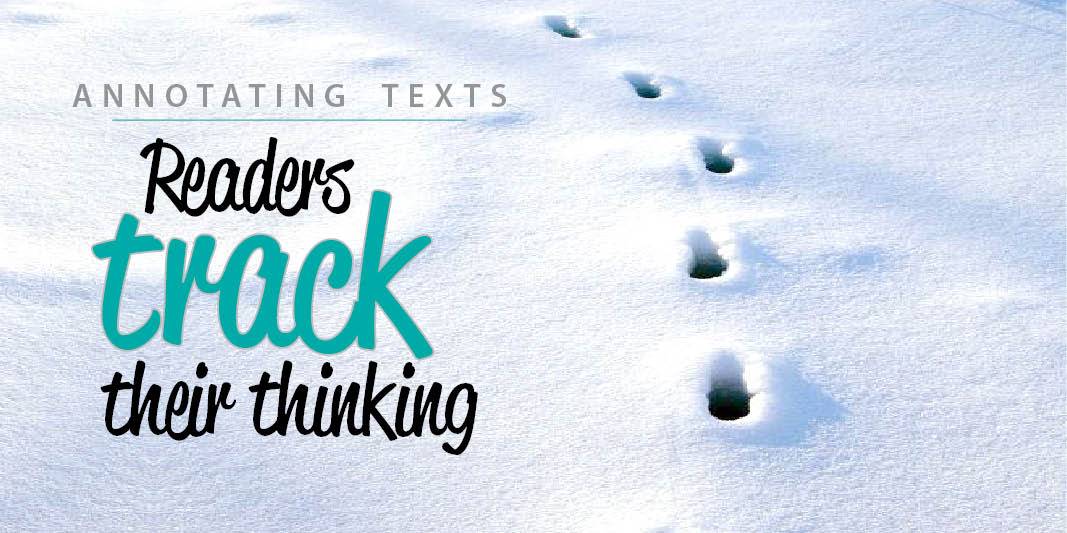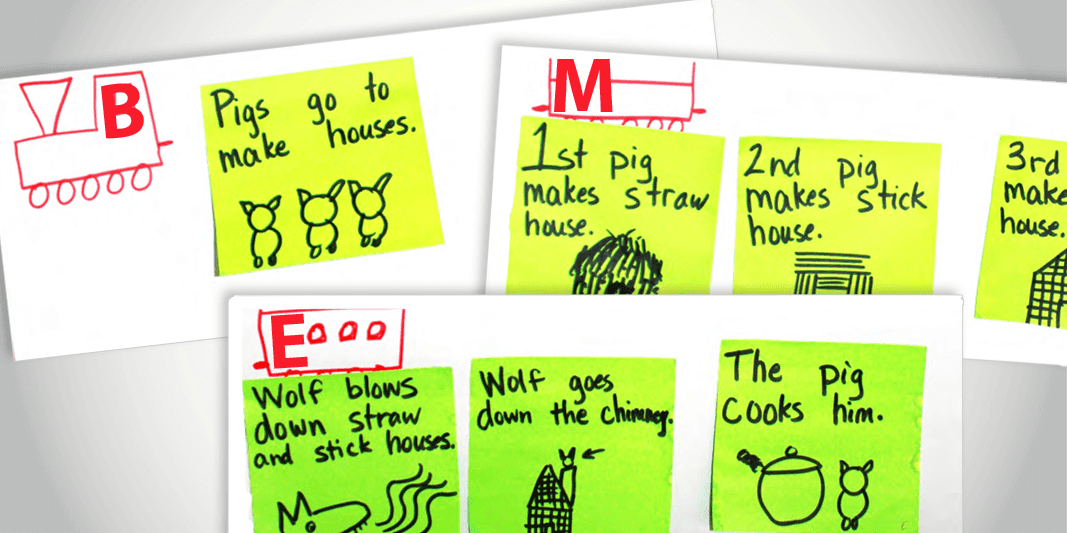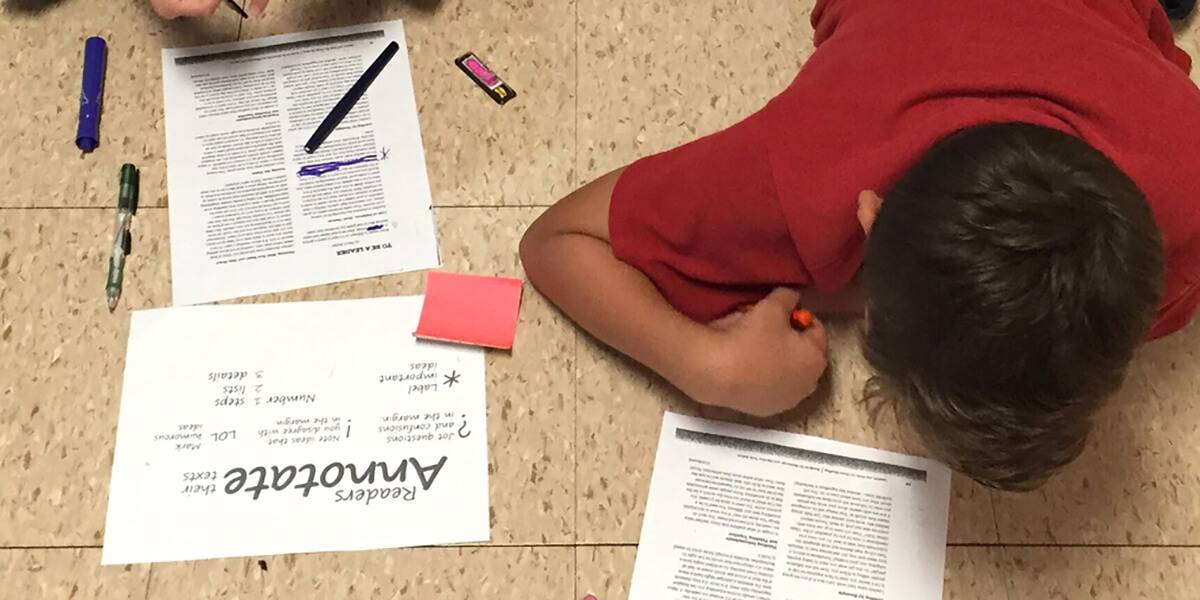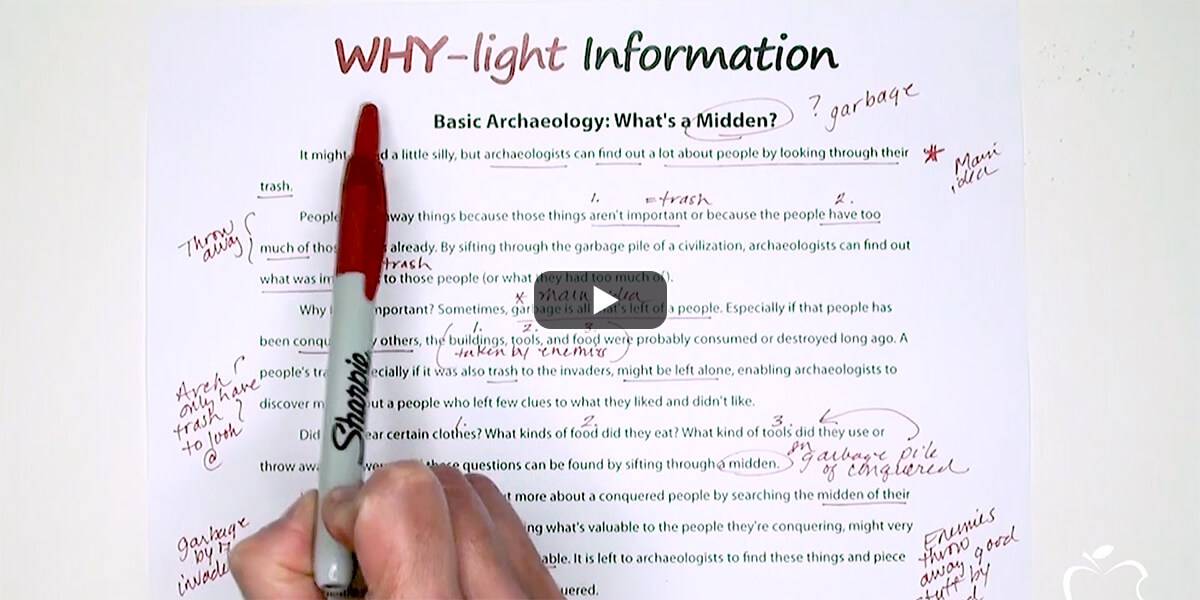Learning Center
reading
Introduce the purpose of annotation
october 16, 2017

Class, when reading, be sure to take notes, too. Use your highlighter and sticky notes. Mark up the text while you read.
This is a familiar command in many classrooms. Often teachers require students to annotate the text–and they comply. But for some students, annotation is just a task; it’s just something the teacher makes them do. Too many students don’t know what they should be marking and/or why they should be noticing it. The secret to building this essential reader habit is to provide explicit instruction connecting annotation to the Thinking Voice.
Once students are aware of and listening to their Thinking Voices, they are ready to jot down the various thoughts they are having. Students are to note what their Thinking Voices are whispering. That’s what annotation is—the documentation of the Thinking Voice.
- If the Thinking Voice makes a connection, the reader should mark the words in the text and note the connection in the margin.
- If the Thinking Voice creates a visualization, the reader should mark the words in the text and create a quick sketch in the margin.
- If the Thinking Voice questions or predicts, the reader should mark the words in the text that caused the wondering, and then note the question/prediction in the margin.
- If the Thinking Voice retells a paragraph, summarizes a chunk, identifies the main idea of a section, or generates a new understanding/synthesis, the reader should mark/bracket that portion of the text and label it in a 2-3-word phrase within the margin.
When introducing the process of annotation, emphasize that in addition to marking (e.g., underlining, circling, highlighting, etc.) the words in the text, students MUST note their thinking. That’s imperative! Readers don’t just have thoughts; they have thoughts about the text. Certain words/phrases/sentences read by the Reading Voice caused the Thinking Voice to whisper. It’s just as important to know what the Thinking Voice said as it is to know what words prompted the thought. This ensures that the reader is focused on the text/the author’s ideas.
The teacher should plan to model this process. Project a short passage and read it aloud. Periodically pause the Reading Voice to share a thought. While the Thinking Voice whispers the thought, underline the relevant words and note the gist of the thought in the margin. Continue this process while reading a short passage.
The explanation above addresses WHAT annotation is. But for students to buy into this reader habit, they also need to know WHY it’s important. Consequently, reveal a photograph of footprints in the snow or wet footprints on a pool deck. Reminisce about times students have “made tracks” and then looked back to see their path.
Compare this experience to annotation. Connect the white margin space on the page to the white snow (or the dry pool deck). Every time they note a reader thought in the margin, students are placing another footprint in the snow/on the deck. When they are done reading, they can look back at the journey of their thinking. This not only helps them stay engaged during reading, but also helps them recall information after reading.
For additional lessons, resources, and graphic organizers to support this essential reader habit, check out other articles within the Annotating & Note-Taking category of the Learning Center.
View a reading mini-lesson that introduces annotation to fifth graders. NOTE: These students had already been exposed to the concept of Reading Voice and Thinking Voice.
Kristina responds to a question from Susan Sernau from South Bend Hebrew School (South Bend, IN) who asked: “Would it be a good idea to use the key words like ‘visualize,’ ‘make a connection,’ and ‘ask a question’ right away to serve as markers for the kinds of responses out there, or would you do that as a next step to this lesson?”






